While the gravel sector may have once been a niche “n-1” category, these days bikes are so specialised that it’s not uncommon for enthusiasts, and certainly gravel racers, to have multiple steeds in their stable. Many modern gravel bikes ask you to choose: race day or escape mission, minimalist or pack mule, slack and shreddy or a road racer with big-tyre clearance. The FiftyOne Assassin refuses to pick sides.
It’s not an all-out racer but it’s certainly a “yes, and…” bike that thrives on versatility. Born from a company celebrated for its custom road bikes, the Assassin is FiftyOne’s first production frame, yet it’s clear a lot of thought went into its design. With adjustable geometry, an impressive list of features, and a stealthy Black Ops finish, the Assassin is anything but “just another gravel bike.”
Meet the FiftyOne Assassin
(Image credit: Billy Sinkford)
Based in Dublin, Ireland, FiftyOne is a boutique bike brand founded in 2016 by former international racer Aidan Duff. Born from Duff’s frustration with the growing “one-size-fits-most” approach among high-end bikes, he set out to combine modern carbon fibre technology with handmade precision.
Several bespoke FiftyOne bikes have appeared in CW over the years, praised for their timeless tube shapes, refined ride quality, and eyecatching paint schemes.
In 2021, FiftyOne expanded into gravel with its first production monocoque carbon frame—the Assassin—while maintaining the same bespoke ethos: adjustable geometry, broad component compatibility, and thoughtful design that gives riders the freedom and versatility to customise the bike’s handling to their exact needs.
FiftyOne states that its gravel bike is made for “explorers, shredders, racers, bikepackers and anyone else who loves getting away into the countryside.”
To meet the needs of such a broad spectrum of riders, the Assassin comes loaded with features including an adjustable geometry.
Adjustable GEO
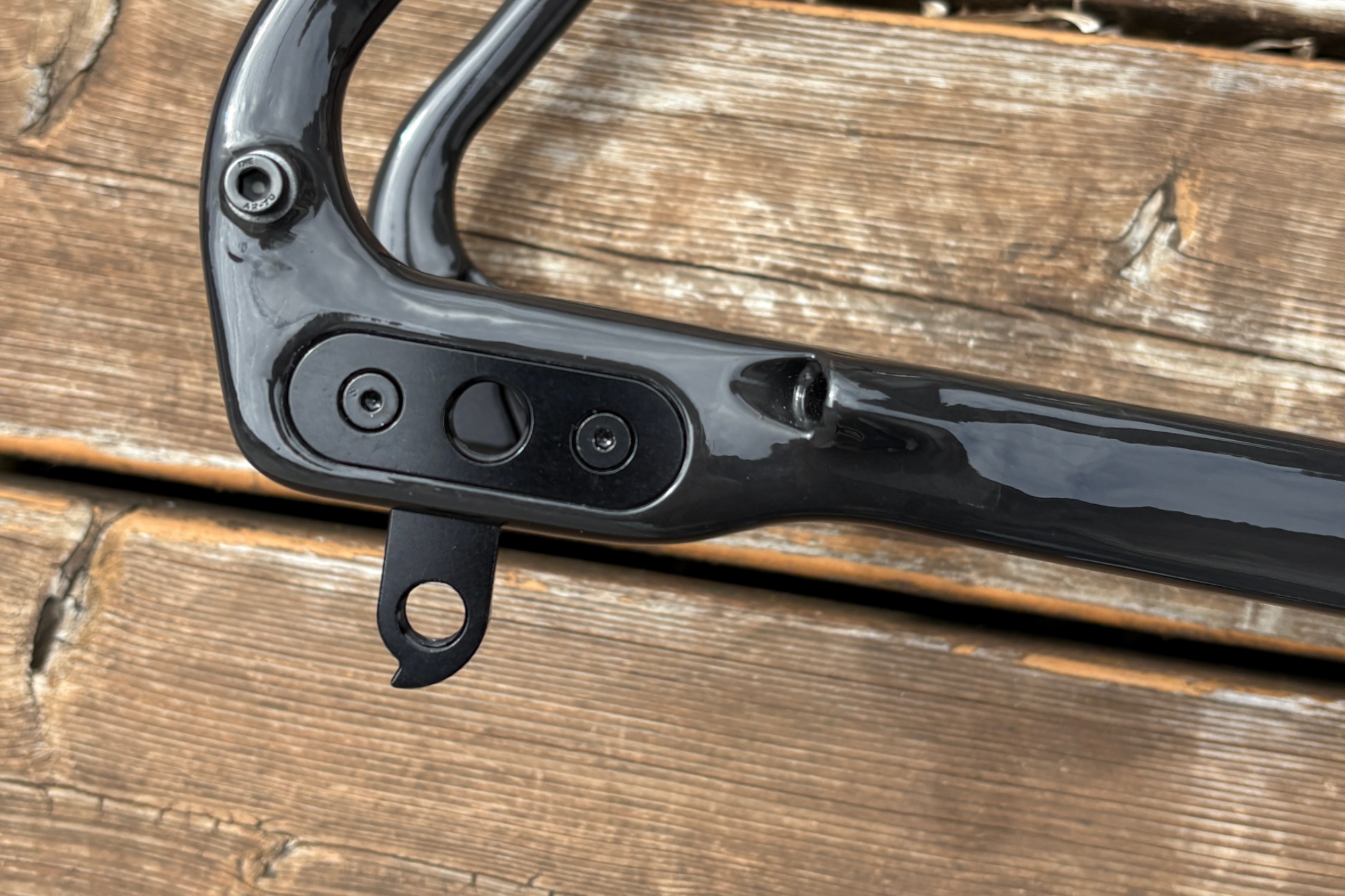
(Image credit: Anne-Marije Rook)
In line with a growing trend among modern gravel bikes, the Assassin is designed around a long top tube and short stem combination, and pairs it with an extended wheelbase to enhance stability and handling while eliminating the risk of toe overlap when using wide tyres.
Just how slack the bike’s geometry is depends on how you set it up. The Assassin features not one but two flipchips with a total for five different positions. At the rear, the flip chips offer three axle positions, adjusting the effective chainstay and wheelbase length from 430mm in the middle position to 425mm at its shortest or 435mm in full shred mode. In the front, the fork chips offer two positions, High and Low. The Low position gives the bike a longer trail and slacker head tube angle, meant for technical terrain. The High position creates a shorter trail and a steeper head angle, for less technical and faster terrain. The fork offset changes from 45 to 53 mm, and vice versa.
Riders are encouraged to play with the different flip chip positions to find one that works best for their riding style and terrain. With that said, the basic guidelines are:
– For rugged terrain, 45mm+ tyres and a more mountain bike feel: go long and low
– For racing or riding on hardpack or less technical terrain with a maximum tyre width of 38mm: go short and high.
Adjusting the front flip chips involves removing the front wheel and rotating the metal inserts. Rear adjustments are best done at home as it requires swapping out the inserts and realigning the brake caliper. It takes only a few minutes but since spare parts are involved, it’s best done in good light and without the risk of accidentally losing any parts.
Ready to go long
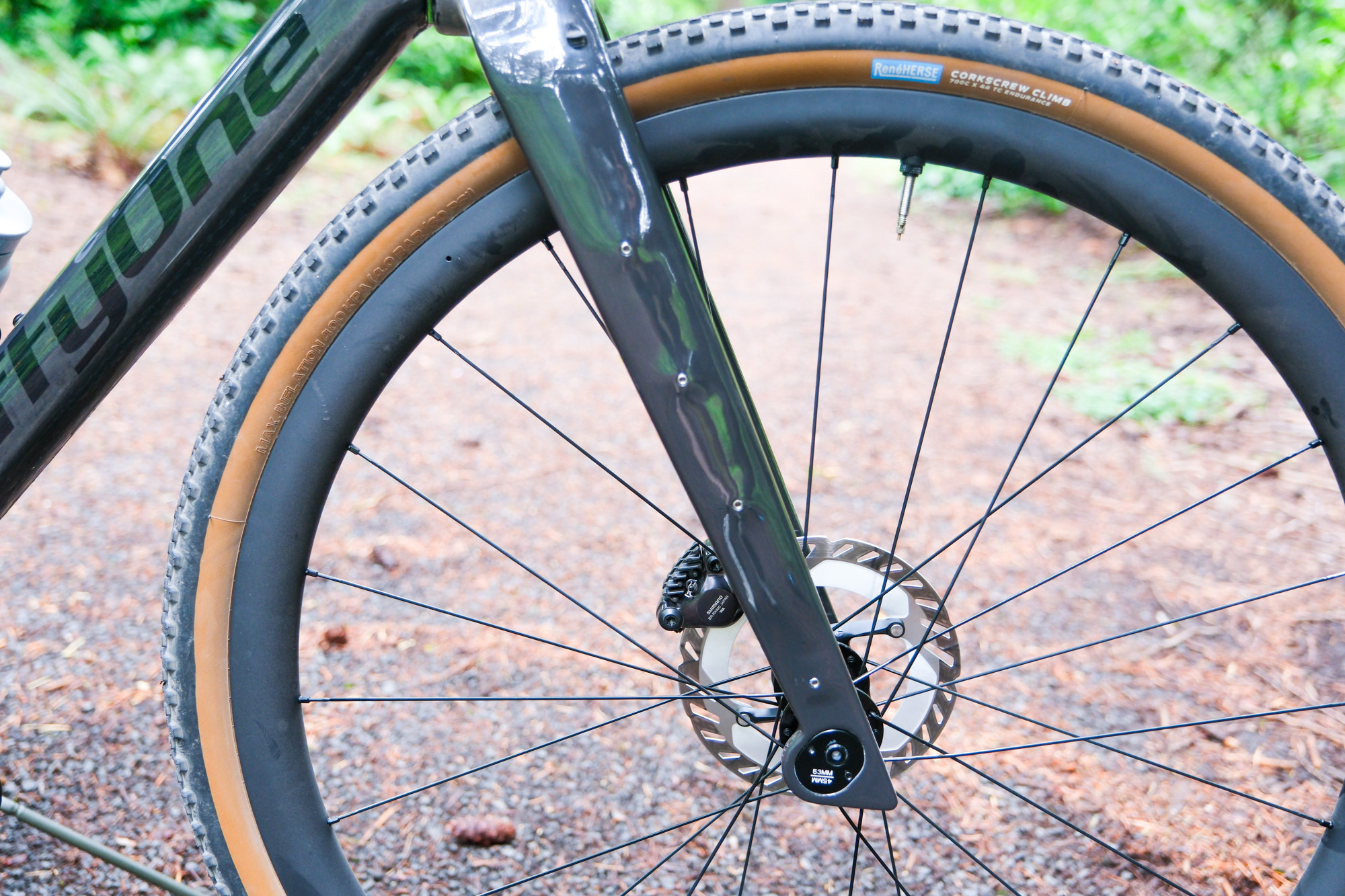
(Image credit: Anne-Marije Rook)
Adjustable geometry aside, what I really appreciate about the Assassin is the sheer number of thoughtful features that are important in my riding style yet, more often than not, do not come stock on gravel bikes.
I’ll drop a list below but special mentions are the guided routing for dynamo lights, room and mounts for fenders and the joint compatibility to run a dropper post and a wired Di2 drivetrain.
Features
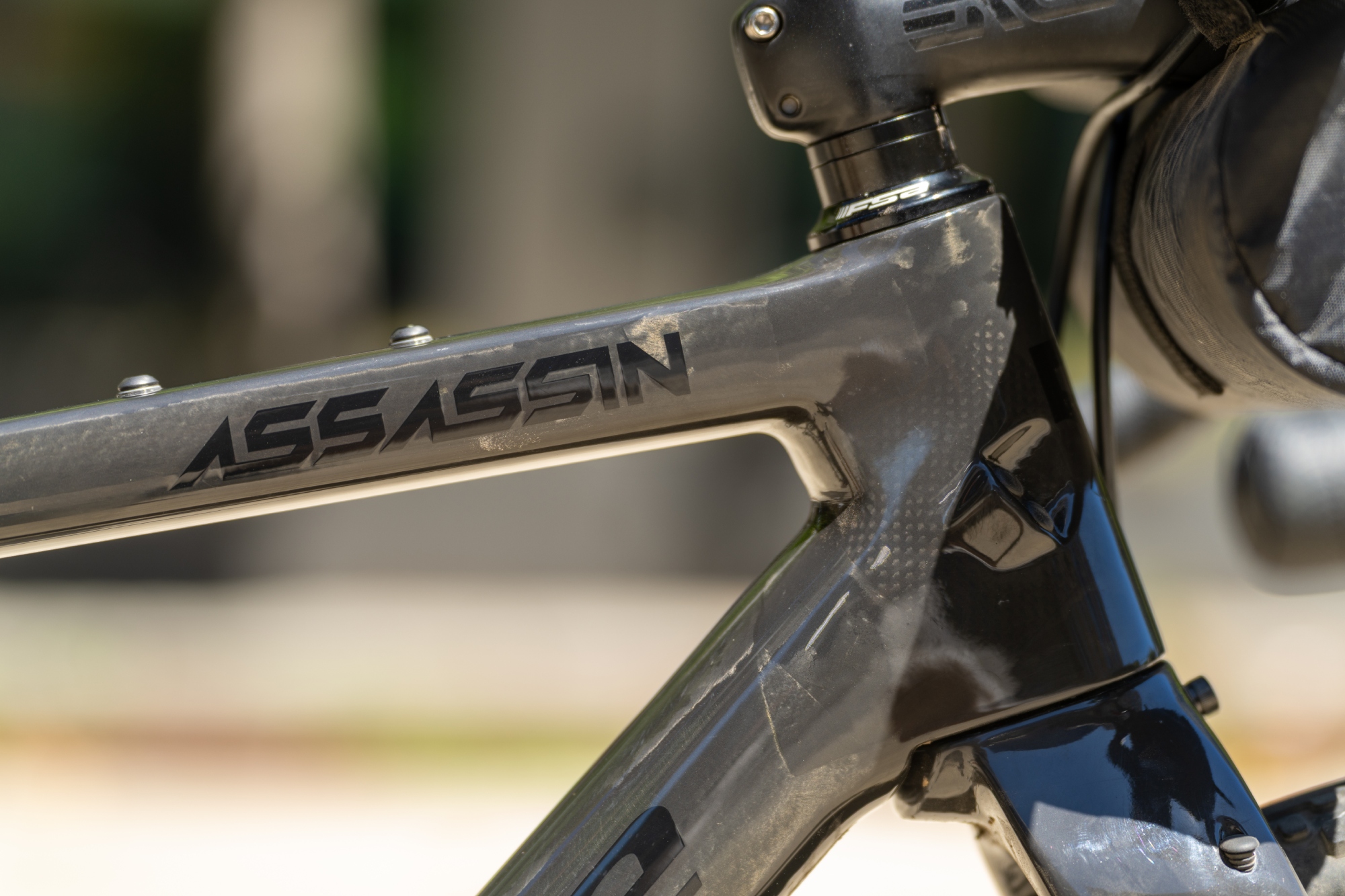
(Image credit: Billy Sinkford)
- Fli pchip in frame and fork
- 47mm tyre clearance in both 700c and 650b
- 1x or 2x, up to 50/34
- Dropper post and Di2 jointly compatible
- Front dynamo internal routing
- Fender and rack mounts
- 4 portal bosses + 2 bottles
- 27.2 mm round seatpost
- T47 threaded bottom bracket shell
- Weight: 1,785 grams including hardware
- Price: €3,000
My Bike Build:

(Image credit: Anne-Marije Rook)
For this review, FiftyOne set me up with a frameset to build up to my liking. Here’s what my build consisted of:
The Ride
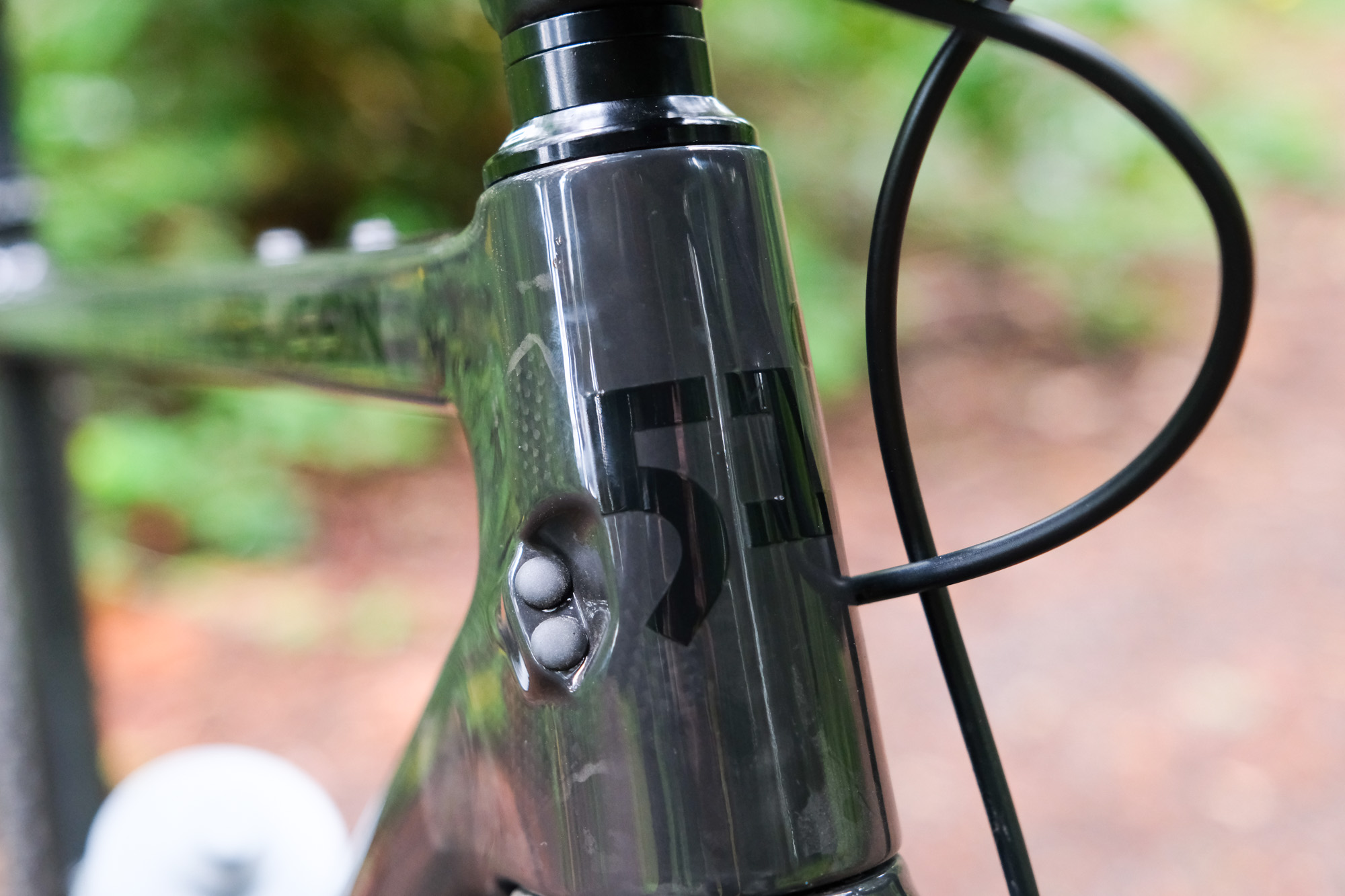
(Image credit: Anne-Marije Rook)
I live in the beautifully varied yet very rainy Pacific Northwest. The gravel riding I enjoy spans the spectrum, but my outings tend to be long, hard and, often, technical. I get a real kick out of being underbiked, and most rides include a mix of singletrack and occasional hike-a-bike sections. That means I need a bike that’s both capable and lightweight.
My current go-to steed is a Specialized S-Works Crux, a wonderfully light race machine that I love but honestly, it’s completely the wrong bike for the kind of punishment I subject it to: ultra-distance gravel races, bikepacking adventures, detours onto mountain bike trails, and riding through six months of persistent rain.
In contrast, the FiftyOne Assassin, with its multitude of bosses, fender mounts and integrated dynamo routing, feels almost purpose-built for my style of riding. It’s no S-Works featherweight but it’s far from a heavyweight, and I’d wager it can take abuse a little better too. My only regret during testing was not finding the time to take it bikepacking. This Assassin would be an efficient, fun and very capable companion for those longer journeys.
While some gravel bikes can double as a road bike, I’d put the Assassin squarely in the off-road category. Depending on how you set it up, it ranges from playful to downright shreddy, but it doesn’t quite have the snappiness or top-end speed of a true quiver-killer. By that, I don’t mean to detract from its versatility; it’s an invitation to lean into what the bike does best.
To that end, I built this bike up with Shimano’s new wireless GRX drivetrain, Rene Herse’s 44mm Corkscrew Climb tyres and 40cm wide ENVE AllRoad bars.
Before diving into handling and the flip chip system, I have to say: I’m a sucker for stealthy bikes, and the Assassin’s BlackOps finish is downright sexy. Best appreciated in person, the clear coat over raw carbon not only showcases the frame’s carbon weave and craftsmanship but also perfectly complements the bike’s “Assassin” persona.
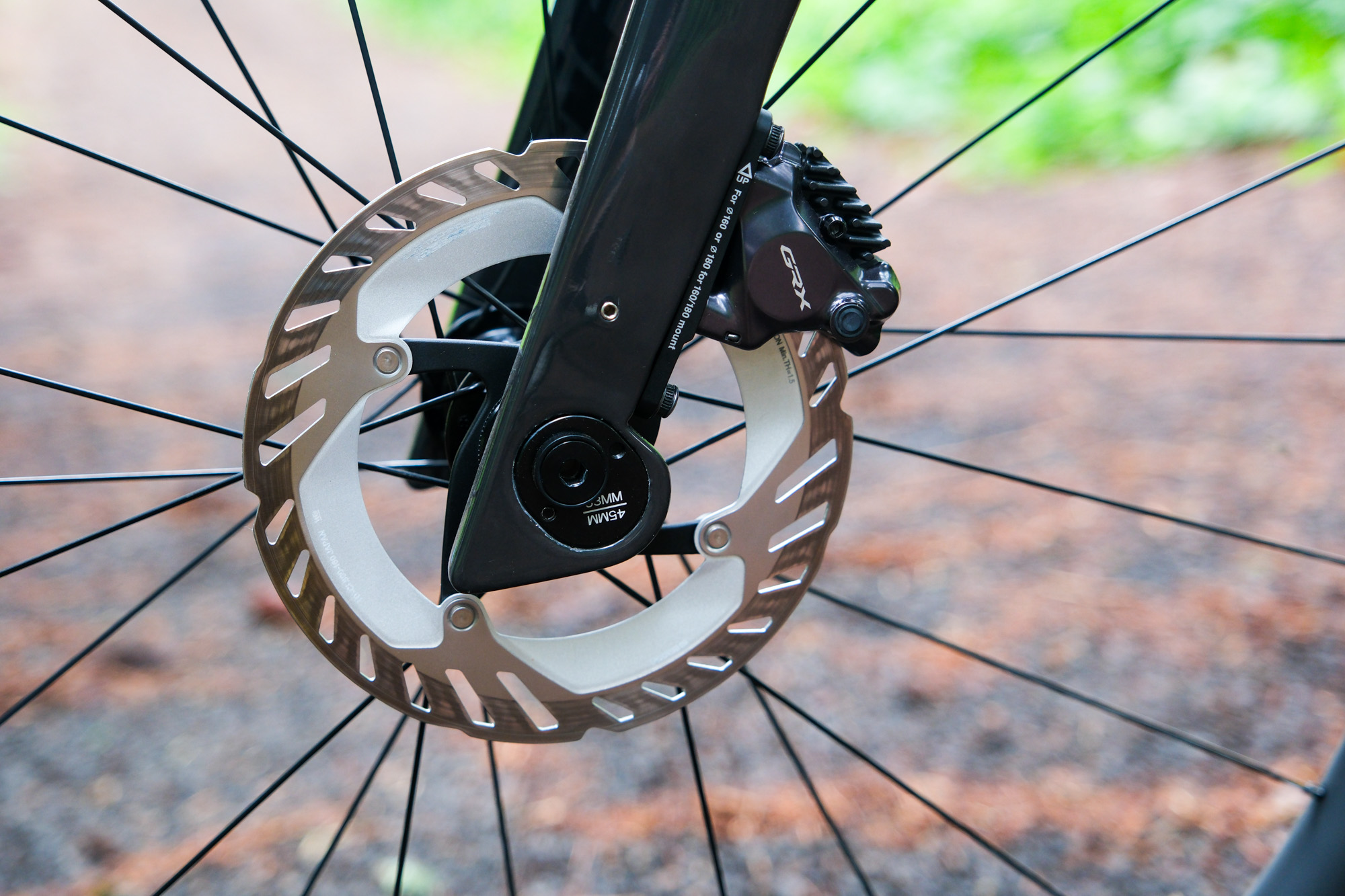
(Image credit: Anne-Marije Rook)
Now, about handling. I must admit that I feel torn about flip chips in general. In my experience, most consumers set them once and never touch them again. Tet a bike like the Assassin begs to be played with. Its versatility truly shines when you take the time to experiment with different tyres and flip chip settings.
In its shreddiest, ‘long and low’ position, the bike is impressively capable. A mountain biker’s idea of rigid bike. The progressive geometry makes it easy to keep your weight balanced and moving around when things get steep or uneven, or you’re carving through some loose banked corners. Surprisingly, the Assassin’s bottom bracket height is relatively tall; with a BB drop of 70 mm, it sits higher off the ground than I’d expect. Personally, I don’t love to be super low to the ground, and prefer the benefits of less pedal strike and more nimbleness but it surprised me nonetheless. All in all, the low and long setting is fun and confidence-inspiring, and one that saw me net my personal best on a short but technical section of trail in my favourite city park.
That said, there’s a trade-off in quickness, noticeable especially when the off-road sections are strung together with pavement in between. For a more efficient ride where pace and nimbleness are more important than stability, the ‘short and high’ setting offers the liveliest feel. This is the setting one would want for a mixed-terrain group ride, a gravel race or, even, when using the Assassin as a wide-tyred, full-fendered commuter.
Most of my time, though, was spent in the happy middle; with the fork in High and the rear in the middle. Even with the 44mm knobbies, toe overlap wasn’t an issue, and the bike struck a nice balance: keeping pace on pavement and hardpack while still handling singletrack detours with ease.
If you’re reading this and have a flip-chip enabled bike, I’d highly recommend playing with the setups to find the handling that best suits your terrain and preference. On the Assassin, it was relatively easy to do and it’s fun, too, because it feels like you have more than the one bike.
The gravel world is evolving fast, and in the years since the Assassin launched, some developments might call for an update to the model sooner rather than later. Tyre clearance is one. With races now being contested on tyres upward of 700 x 52mm, the Assassin’s 47mm max may be a limiter to some. Then, there’s SRAM’s insistence on UDH derailleurs, and the Assassin’s lack of integrated storage, a feature increasingly common on do-it-all gravel steeds. Duff assures us an update is coming, but for me, these are wishlist items rather than dealbreakers.
Value & Verdict
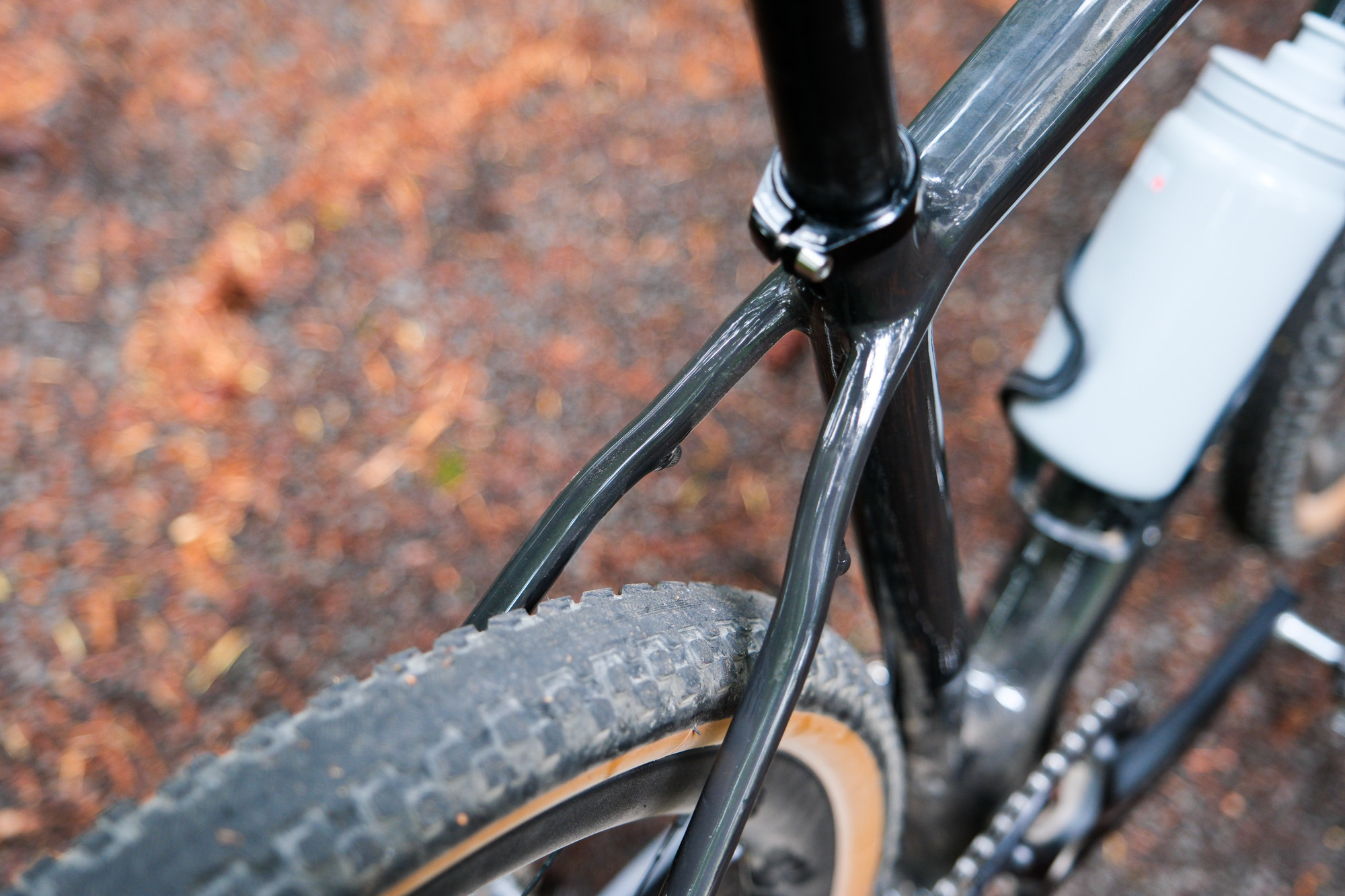
(Image credit: Anne-Marije Rook)
At €3,000 for the frameset, the Assassin is certainly an investment, but it’s priced in line with mass-production options such as the Specialized Crux 10r (€3,100), Santa Cruz Stigmata (€2,800), and Trek Checkpoint SLR (€3,500). When you factor in the Assassin’s capability and boutique pedigree, it’s perhaps more apt to compare it to something like the ENVE MOG. And here, it comes in well under that bike’s €5,995 price (thought that does include a seatpost and cockpit).
The Assassin’s appeal lies in its blend of versatility, real-world utility, and sheer fun factor. It can tackle everything from rowdy, technical terrain to all-day mixed-surface adventures to fully loaded bikepacking trips. It offers thoughtful and practical features like extensive mounting points, integrated dynamo routing, and adjustable geometry that are hard to find in mainstream offerings.
This is the kind of bike that can shift roles over the years yet remain a trusted, capable companion. For riders seeking a custom-inspired, performance-driven gravel bike that handles technical terrain with confidence and thrives on variety, the FiftyOne Assassin is a compelling choice worth considering.
